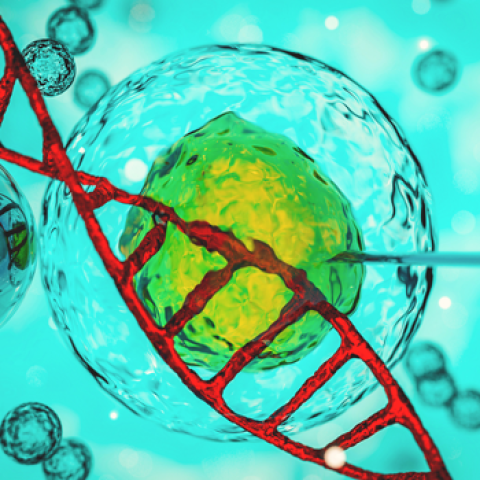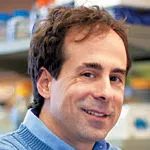Interdisciplinary Initiatives Program Round 9 - 2018
Agnieszka Czechowicz, Pediatrics (Stem Cell Transplantation)
Mark Kay, Pediatrics (Human Gene Therapy) and Genetics
Hematopoietic stem cells (HSC) are unique cells that have the remarkable ability to give rise to all cells of the blood and immune system. These cells have been harnessed in bone marrow transplantation for the last 60+ years and have been shown to be capable of curing virtually any blood and immune disease, including genetic diseases, autoimmune diseases and cancers. Usually these cells are taken from a healthy donor and transplanted into a diseased patient, however this has many challenges including the need to immunosuppress the recipient to prevent immunologic graft rejection and potential graft vs host disease due to immunologic attack by the donor cells on the host. This ultimately causes bone marrow transplants to be quite unsafe in their current form, resulting in severe complications in ~10-20% patients including occasional deaths, which dramatically limits the use of these otherwise curative transplants.
Genetic modification of the patient's own cells can bypass the need of transplanting cells from a donor, which would make stem cell transplantation much safer. This can be accomplished with a number of new technologies, the most promising of which is the CRISPR/Cas9 system which enables direct editing of DNA. However, for efficient gene-editing one needs to deliver these agents efficiently into the desired cells. Although several strategies such as electroporation and transfection have been developed to enable delivery into other cell types, these cannot be efficiently performed in HSCs, which is what is needed for long-term cure of blood and immune diseases. Adeno-associated virus (AAV) offers an alternative approach, which could be a very safe and effective vehicle for gene delivery, and has already been approved by the FDA for the treatment of a genetic eye condition. AAV can be used successfully to not only to deliver a missing or faulty gene into cells, but also the machinery for gene editing plus the template DNA which opens further important possibilities for unique regulated genetic engineering.
AAV can efficiently enter many different cell types, however this efficiency is dependent on the specific AAV-capsid sequence. The majority of studies performed to-date have used only native AAV capsids (~20 types), which were isolated from human, non-human primates and other mammals. Unfortunately all current AAV serotypes have been shown to transduce HSC poorly, with the exception of AAV6. However, for HSC-transduction even AAV6 needs to be used in very high numbers, making clinical use challenging. Given the high clinical need and high likelihood of success with generation of other new AAV-capsids, we propose to use the collective knowledge of HSC-biology and gene-therapy/AAV production to successfully use intermolecular DNA capsid shuffling and evolution selection strategies to isolate and engineer unique AAV vectors that robustly infect mouse and human HSCs. We believe these capsids would be useful to enhance gene-editing efficiencies in HSCs, an important step towards an approach that could result in a cure for the many blood and immune diseases that are in theory treatable by genetic manipulation. The expertise of the two diverse labs is critical for the success of the project and will likely provide the basis of future productive interactions.



